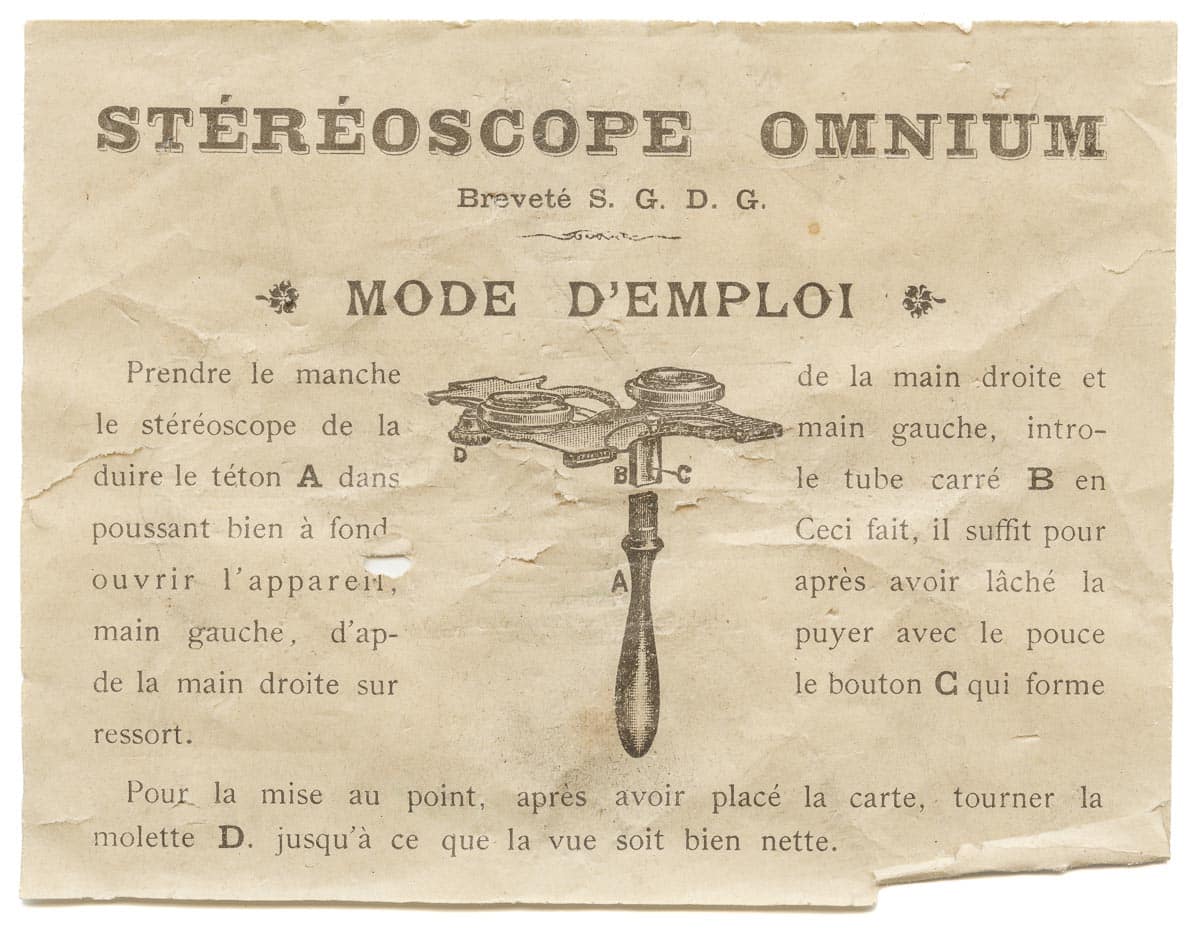Lucien Albert Bize designed a range of innovative and compact stereoscopes in the early 20th century. Many names were associated with the manufacturing of his designs. Bize was born on 18 July 1866, in Noyers in north-central France. He left for Paris and married to Marie Henriette Lepage in 18951. The marriage was short-lived because his wife died in 19022 at the age of 28. Two years later, Bize patented his first stereoscope design for the detachable hand-held stereoscope that was marketed under the name L’Omnium.

Bize’s company was located at 69, Rue Oberkampf in Paris. His company probably consisted of a design workshop and maybe a store. The early stereoscope designs were manufactured by Maison Gustave Jacob at 22, Rue Oberkampf. Jacob claimed in 1906 that he was the holder of the patents for the stereoscope designs of Bize and Simeon Louis Claparède3. Bize and Claparède patented the design for Le Minimus together in 1907. Le Minimus was an innovative multi-view stereoscope based on a very simple mechanism. The stereoscope was, therefore, compact and affordable. The viewer was announced in 1908 as a novelty by Jacob, and was introduced together with the slightly more advanced Multiphote4. Jacob’s company went bankrupt in 19115. Bize continued with designing and manufacturing stereoscopes, and in 1910 he introduced Le Polyphote.
On 1 January 1913, Bize sold his company to Robert Pleyau6. Bize’s last patent, a design used for L’Astra, was filled in 1912. This viewer was presented by Pleyau in 1913. Pleyau was mobilised by the French army after the outbreak of the First World War in 19147. He managed to keep his company going, because in 1916 he advertised for the hiring of a mechanic8. Pleyau sold a part of his business activities to La Société E. Brose et Cie in 19179, but he remained active as an entrepreneur at 69, Rue Oberkampf. It is unclear if Pleyau sold the manufacturing activities of stereoscopes. Finally, E. Bertrand advertised as “Ancienne Maison Bize” in 192110.
It is unclear what all these names and changes meant for the manufacturing of the stereoscopes after 1914. It is possible that the manufacturing has been ended during the war. The stereoscopes have not been found in post-war catalogues or advertisements so far. If this is true, then Le Polyphote, but especially L’Astra, were only manufactured for a short time.
Bize married again in 1920 to Blanche Schmitt. The marriage register mentioned his profession as a mechanic, probably because he was no longer active as an entrepreneur or designer. Pleyau was convicted in 1926 for “abus de confiance” (breach of trust)11 and he was declared bankrupt the same year12.
References
- Base de dépouillement des registres d’état civil et paroissiaux du Loiret. Via: geneanet.org ↩︎
- Cimetière du Montparnasse (1902) ↩︎
- Le Journal (21-09-1906). Via: gallica.bnf.fr ↩︎
- La Gaulois (29-07-1908). Via: gallica.bnf.fr ↩︎
- La Lanterne (15-03-1911). Via: gallica.bnf.fr ↩︎
- L’Information photographique (1913), p. 175. Via: gallica.bnf.fr ↩︎
- Registres matricules du recrutement (1887-1921). Via: archives.paris.fr ↩︎
- L’Intransigeant (1916). Via: gallica.bnf.fr ↩︎
- Le Courier (29-11-1917). Via: gallica.bnf.fr ↩︎
- Annuaire du commerce Didot-Bottin (1921), p. 1510. Via: gallica.bnf.fr ↩︎
- Robert Hippolyte François Pléyau (1883–1978). Via: geneanet.org ↩︎
- Le Radical (13-03-1926). Via: gallica.bnf.fr ↩︎
